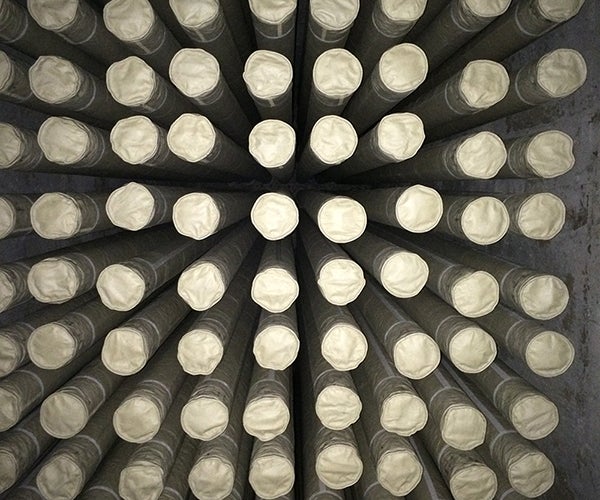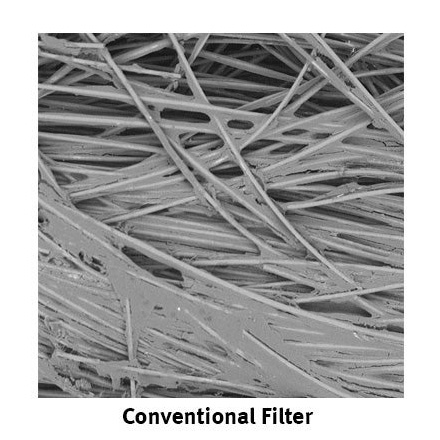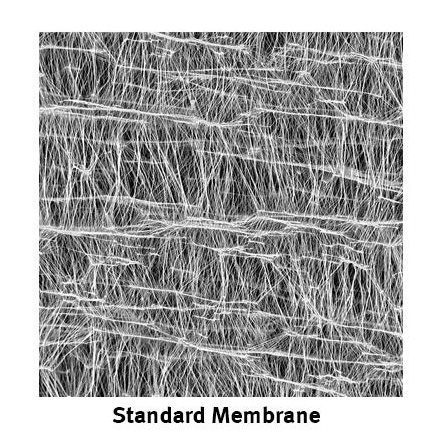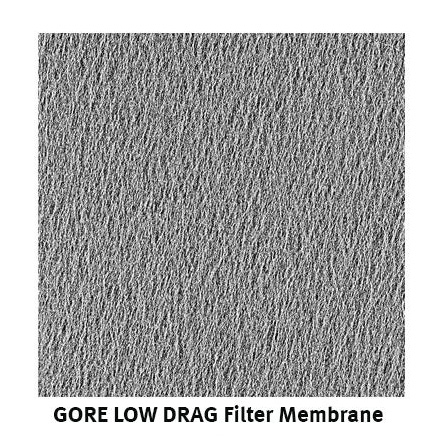How Gore’s ePTFE Fabric Baghouse Filters Improve Dust Collector Operation and Maintenance Costs
Combining cutting-edge technology with a wealth of expertise, Gore’s high-performance filter bags enable manufacturing processes to capture emissions and reduce their environmental impact.
Designed to meet the demanding requirements of baghouse operations in a wide range of industries, including cement, chemicals, metals, and waste-to-energy, Gore filter bags are robust, efficient, and durable, promising a low total cost of ownership and a long bag life.
Successful baghouse operation is not just a matter of achieving regulatory compliance. The cost of compliance can be high. By choosing the right filter bags for your operation, and implementing best practice baghouse operation, cleaning cycles, and baghouse maintenance, you can reduce emissions efficiently and cost-effectively. At Gore, we have the technology, the experience, and the expertise to help you manage this critical area of your flowsheet.

How Gore’s ePTFE Fabric Baghouse Filters Improve Dust Collector Operation and Maintenance Costs
High cleaning frequency is one of the biggest concerns for baghouse operators. Frequent cleaning reduces filter bag life and increases operating costs, but if your filter bags are blinded you have little choice – until you reach a point where the only option is to change out your filter bags. High cleaning frequency and/or blinded filter bags are usually an indication that you have the wrong bags installed in your baghouse. Take a look at the below bag filter diagram.




Conventional fabric filter media allows particulates to penetrate the core, meaning the filter quickly loses efficiency – even with frequent cleaning. Standard membrane filters are better at preventing particulates from accessing the core of the filter, but are still liable to see dust penetrating the filter surface, which prevents cleaning from being truly effective. The GORE LOW DRAG Filter Membrane, however, maintains excellent airflow, does not allow any dust to penetrate the surface, and cleans absolutely. As a result, baghouse differential pressure (dp) drop is significantly lowered, cleaning frequency is reduced, and you can expect a much longer bag life.
Learn how a steel plant managed to decrease its energy costs substantially while increasing its performance at the same time thanks to the use of GORE® LOW DRAG Filter Bags.
These Baghouse Mistakes Are Costing You Money
In order to achieve compliance with stringent emissions regulations such as NESHAP and MACT, baghouse operation and maintenance must be prioritized. And while some baghouse challenges are the result of poorly performing filter bags, others are the result of improper baghouse maintenance and repair, or even poor installation or baghouse design.
Read this article for tips on a few of the baghouse maintenance mistakes that may be costing you money.
Learn About Gore’s Low Emission Filter Bags
If you are looking for filter bags to reduce emissions from your chemical processing, incineration, cement or metals processing application, check out GORE Low Emission Filter Bags. These filter bags are designed and manufactured for extremely low dust emissions, with taped seams capable of withstanding temperatures up to 260 ˚C.
Learn About Gore’s ePTFE Membranes for Industrial Baghouse Filters
We’re constantly working to improve filter bag efficiency. Whether you are operating a cement mill baghouse, a coal mill baghouse, or any industrial filtration operation, we want to see you achieve reduced emissions at better energy efficiency and with a low total cost of ownership. That’s why every new generation of Gore ePTFE membrane brings new advantages to your baghouse filter system – increasing productivity, reducing costs, and improving reliability.
Read about the development of our advanced filter membranes and all the services we offer to improve dust collection efficiency.